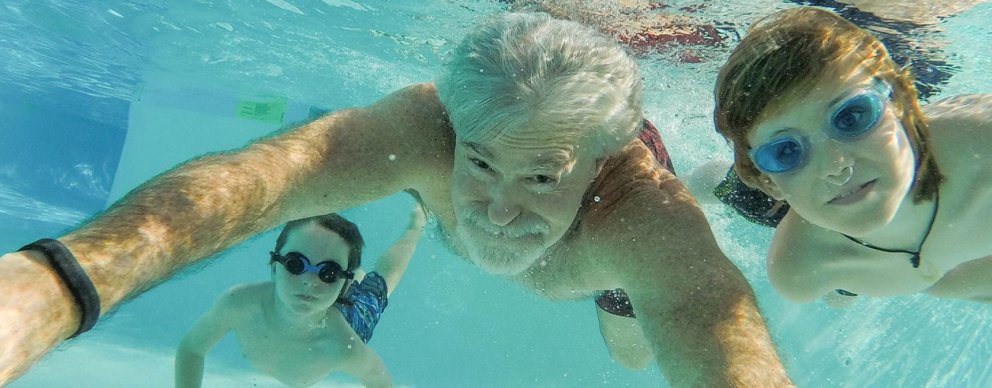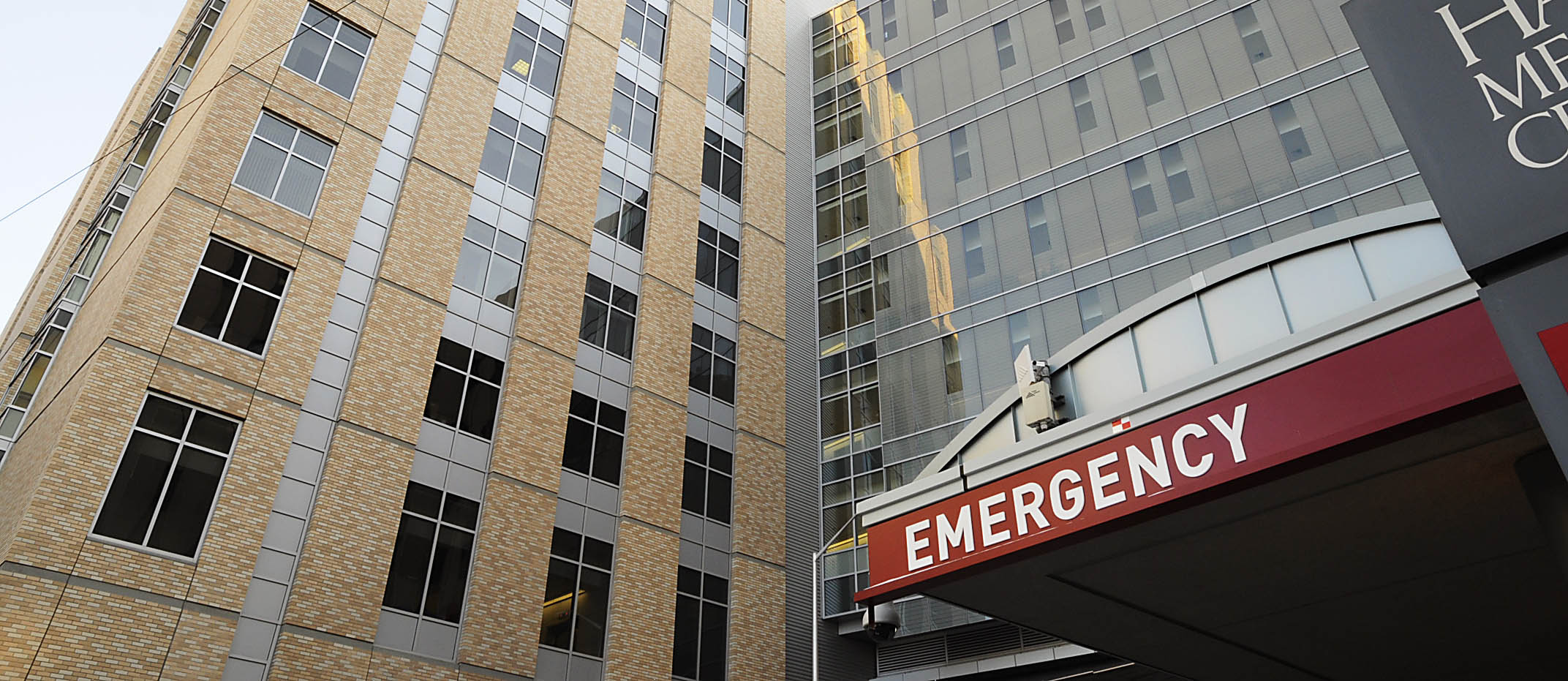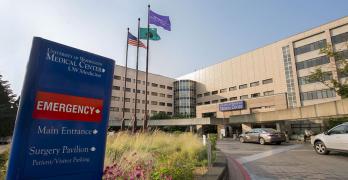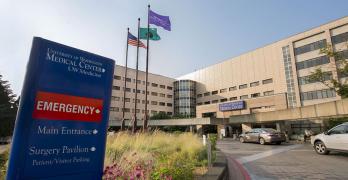Lung Transplant
As the only lung transplant specialists in the Northwest, we will help you breathe easier and get back to your life

Lung transplant care that transforms and saves lives.
Proven Experience
As the only lung transplant program in the Northwest, our team performs up to 60 transplants per year and has transplanted nearly 1000 patients.
Excellent Patient Outcomes
The median survival rate of all lung transplant recipients is 6.5 years, and recipients in our lung transplant program meet or exceed these national averages.
Dedicated Team Approach
We use a multidisciplinary team approach through all phases of the transplant process, with involvement from patients and families.
Some of our common services:
There are many other problems that can occur after a lung transplant. Some of these are:
- Primary graft dysfunction. This is when the lung(s) do not work as they should right after the transplant surgery. If this happens, recovery may be slower. The recipient may also need to stay in the hospital longer. The recipient may die if the lung(s) do not begin to work.
- Surgical incisions may not heal fully. They may come apart or become infected. Treatments for incision problems include medicines to fight infection, more dressing changes to the wound or surgery.
- Airway (bronchial tube) problems may occur. These problems include airway stenosis (narrowing) or airway dehiscence (airway falling apart). If these problems occur, the recipient may need a bronchoscopy or surgery to repair or widen the airways, or to place a stent.
Over time, other problems may also occur. Many of these may be related to the immune-suppressing drugs. Side effects from these drugs include kidney problems that may require dialysis or a kidney transplant, digestive problems, blood count problems, nerve damage, high blood pressure, weight gain or diabetes.
Immunosuppressive drugs also increase the risk of getting cancer. Transplant recipients can develop cancers such as skin cancers and a type of lymphoma called post-transplant lymphoproliferative disorder (PTLD). Cancer after a lung transplant can be minor, but it can also be very serious or life-threatening. Patients may need surgery or chemotherapy to treat these cancers.
Your transplant care team includes a number of people:
- A transplant coordinator provides education about the process and is your advocate throughout.
- A transplant pulmonologist determines whether you are a good candidate for transplant and will provide care for you for the rest of your life after transplant.
- A transplant surgeon meets with you to discuss the significance of having the surgery, the transplant procedure, risks, possible complications and recovery process.
- A transplant pharmacist will teach you about the medicines you will be taking after your transplant.
- A social worker will evaluate your ability to cope with the stress of having a transplant and identifies your support network.
- A financial counselor will talk to you about associated costs and insurance coverage.
- A psychiatrist may conduct an in-depth psychiatric evaluation.
- A dietitian will assess your diet and provide nutrition education.
- You may also be referred to another service for consultation to check for other medical conditions.
On average, 85-95 percent of patients who receive a lung transplant are living one year after transplant surgery. The median survival of all lung transplant recipients nationally is about 6.5 years. Recipients in the UW Medicine lung transplant program meet or exceed these survival rates.
After a lung transplant, most recipients report that they are doing well. Most feel that their quality of life has improved. Some are able to return to work. Others are able to enjoy their retirement, travel and spend time with loved ones.
Our goal is for every transplant recipient to improve their quality of life. This does not always occur. Patients who have problems after a lung transplant may need to be hospitalized many times. They may not be able to do normal activities, they may feel short of breath and they may need extra oxygen. Very rarely, a patient may feel worse than they did before the lung transplant.
A lung transplant is a treatment option for some people with end-stage lung disease. During the transplant surgery, the surgeon removes one or both diseased lungs and replaces them with lungs from an organ donor. A successful outcome after a transplant requires a full commitment from the patient, their family and caregivers, and the entire UW Medicine Lung Transplant Team.
Our lung transplant program—the only one available in the Northwest—has received national recognition for safety and effectiveness. The program’s patients have survival rates that exceed the national average.
The main goals of a lung transplant are to prolong and improve quality of life. After a lung transplant, most recipients:
- Can breathe better and do not need oxygen support
- Can be more active than they were before transplant
- Enjoy a better quality of life
All transplant programs have criteria for choosing transplant candidates. These criteria help care teams know if a patient will benefit from a lung transplant. The criteria used by UW Medicine’s Lung Transplant Program are available upon request, but to be a candidate, a patient must have:
- End-stage lung disease that affects their activities of daily life
- A lower life expectancy because of their lung disease
- Tried all other treatments for their lung disease, without success
Screening
Patients must first have a full health screening before they are placed on the waiting list for a lung transplant. The purpose of the screening is to find any problems that could affect the success of the transplant surgery and the patient’s recovery afterward.
Teamwork
Everyone involved in the transplant process works together as a team. This team includes the patient, their family and caregivers, and the entire lung transplant team.
Commitment
Success depends on the patient’s commitment to the process before, during, and after the lung transplant surgery. This commitment begins with the first clinic visit and continues for the rest of their life. Patients must commit to taking their medicines as prescribed, monitoring their health and new lung(s), practicing healthy living and attending follow-up visits with the team.
Family and caregivers
Success also requires the ongoing dedication of the patient’s family and caregivers. Their commitment must last for the rest of the patient’s life.
Ongoing monitoring
All members of the lung transplant team work together to provide the best possible care before, during, and after the transplant surgery. The recipient must be closely monitored after the transplant surgery and for the rest of their life. This lifelong follow-up is vital to finding any problems early so that tests and treatments can be started right away.
A patient may wait a few days or a few years for the right donor organ to be found. While the patient waits for a lung transplant, their primary care provider and a pulmonologist will continue to manage their medical issues and lung disease.
Waitlisted patients must see a UW Medicine lung transplant pulmonologist at least every 2 to 3 months. At these visits, we review any changes in their health and update studies or tests as needed. We may also set up other visits with the social worker, dietician and other providers as needed.
The United Network for Organ Sharing (UNOS) maintains the waiting list for transplant patients in the United States. The list matches patients waiting for a transplant with a compatible organ donor. Most times, organs are allocated based on how sick a patient is and how long they can expect to live after a transplant. UNOS uses the Lung Allocation Score (LAS) for this process. To learn more about UNOS and the Lung Allocation Score, visit www.unos.org.
The donor lung(s) may come from the Seattle area, or a surgical team may drive or fly to another city or state to get the lung(s). When a potential donor is found, the lung transplant team does a full assessment of the donor lung(s) to see if they are suitable for transplant. This process can involve hours or days of tests and review.
If the donor lung(s) seem to be suitable, we call one or more potential recipients to come to UWMC. If we call more than one potential recipient, the other is a back-up recipient. A back-up is needed in case there are any reasons the lung(s) are not a good fit for the first recipient.
To alert the patient about the potential transplant, we call them by phone at the numbers they provided when they were placed on the waiting list. When the patient arrives at UWMC for the transplant, they are admitted to the hospital. When everything is ready and we confirm that the donor lung(s) are suitable for use, we take the patient to the operating room.
Donor lung(s) that appeared suitable at first may turn out to be not suitable for transplant. Sometimes, the surgical team finds this out when they arrive to get the lung(s). This may happen before or after a potential recipient is called to come to UWMC.
If the donor lung(s) turn out not to be suitable for use, the transplant surgery is canceled. The patient(s) who were called in for transplant are sent home. Most patients have at least one “dry run” while waiting for a lung transplant.
The potential recipient must name at least two people who will be their caregivers before the transplant, while they are on the waiting list and for the rest of their life after transplant. These caregivers must be adults who are able to drive, nonsmokers and able to stay at the hospital all day while the patient is recovering from the transplant surgery.
We do not advise depending on paid caregivers. Paid caregivers are:
- Not covered by most insurance after transplant.
- Not available for care 24 hours a day, 7 days a week.
- Not committed to the lifelong follow-up needed.
As part of preparing for transplant, the patient and their family or caregivers must attend our lung transplant education class. The class explains more about the transplant process, being on the waiting list, the transplant surgery and what to expect after a lung transplant.
Inform yourself to make the best choices for your health and care with UW Medicine patient education resources. Find out what to expect when faced with a lung transplant.
Emotional support is an important part of your treatment. Support groups and community resources can help you and your loved ones through treatment and recovery.
Every day for the rest of their life, the transplant recipient must take many medication. Some of these must be taken several times a day. If they don't, there may be severe damage to the lungs or other organs, and even death.
Medications that help prevent rejection of the transplanted lung(s) are called immunosuppression or immunosuppressive medicines. The recipient also takes medicines to prevent infection and other problems that may occur after the transplant.
Transplant medicines can be very costly. UW Medicine’s financial counselors work closely with the patient to make sure they have enough insurance coverage or other resources to cover these costs.
Two caregivers must be able to help during the first stages of recovery. This is needed because a family member or caregiver must stay with the patient at all times for at least the first three months after the transplant. Most recipients need help taking their medications, cooking meals, paying bills and doing chores like cleaning and laundry. Some patients may also need help with taking care of the surgery wounds and with personal care like bathing, dressing and using the toilet.
How soon a lung transplant recipient returns to their usual activities depends on how their recovery goes. Most recipients can resume a good level of activity 4 to 6 weeks after their transplant surgery. By then, they should be able to walk, bathe and dress themselves.Recipients must limit use of their arms for at least 8 to 12 weeks after surgery so their chest can heal. They may also need ongoing physical therapy to help them regain strength.
The recipient has many follow-up clinic visits with the lung transplant team. The team will watch them closely for any signs of problems. The recipient’s family or caregivers must provide transportation to all follow-up visits. It is not safe for the recipient to drive for several weeks after the transplant surgery. Caregivers must come to all follow-up visits with the recipient so they can learn about changes in the medicines and other treatments.
After a lung transplant, the recipient must have regular clinic visits with the lung transplant team for the rest of the recipient’s life. If the recipient lives far from Seattle, we will work closely with their local doctors, but they still must come to UWMC for regular clinic visits.
After the first recovery phase, if the recipient is doing well, we do blood tests every 4 to 6 weeks and clinic visits several times a year. If there are problems, the recipient may need to have testing or clinic visits more often.
A lung transplant is a major event for everyone involved. The patient’s life is changed in many ways. A successful outcome demands great dedication from the patient, their family and caregivers and the entire lung transplant team. The team stands behind its transplant patients and is dedicated to providing life-long support, medical care, education and resources for them, their family and caregivers.
To have your patient evaluated for lung transplantation, schedule an appointment or ask any questions about the program, call 206.598.5277.
After a lung transplant, recipients face the ongoing risk of the new lung(s) being rejected or becoming infected due to the immune system being suppressed.
The immune system’s job is to protect the body against infection and illness. It does this by destroying germs and other substances that may be a threat. To a healthy immune system, a transplanted organ is an "invader” that must be rejected.To keep their body from rejecting the new lung(s), the recipient must take medications to suppress their immune system for the rest of their life. But, when their immune system is suppressed, the recipient can get infections more easily.
We teach recipients and their family or caregivers about the common signs of infection and rejection. It is vital to notice these signs early and tell the lung transplant team right away. The recipient typically has better results if they get checked and begin treatment quickly.
Different types of rejection can happen after a lung transplant. They include acute rejection, antibody-mediated rejection and chronic rejection, also known as chronic lung allograft dysfunction (CLAD) or bronchiolitis obliterans syndrome (BOS).
If we are concerned that the recipient may be rejecting their new lung(s), we may schedule a bronchoscopy with lung biopsies, blood tests and other testing. If the recipient has rejection, they receive treatments based on the type of rejection and how severe it is.
Sometimes rejection can get worse, even with treatment, and can result in lung failure and death.
Many types of infections can occur after a lung transplant. These can include bacterial infections such as pneumonia, skin infections or infection of other parts of the body; respiratory viruses (like colds) that can cause damage to the transplanted lung(s); and fungal or mold infections. Some infections cannot be treated or do not respond to treatment and can result in lung failure and death. Through close attention and monitoring, our care team works with you to minimize the risk of infection following the transplant procedure and to treat any infections that occur.
Our transplant center has a specialized transplant infectious disease (ID) team. The transplant ID team consists of a group of board-certified ID physicians with expertise in transplant infections.
Patients being considered for a lung transplant undergo a variety of evaluations to test psychological, social and physical readiness before they are placed on the waiting list for a lung transplant. Blood and other diagnostic tests are performed to identify a donor match, gain a picture of overall health and find any problems that could affect the success of the transplant surgery and recovery.
For a patient to be considered for a lung transplant at UW Medicine, their local healthcare provider must refer them. The referring doctor is usually the lung doctor (pulmonologist) who has been treating the patient’s lung disease. The lung transplant team values input from the patient’s other providers and will involve them in both the screening process and longterm care.
Screening
The screening process begins over the phone with a review of the patient’s medical records and health history. If we do not find any issues that may affect their ability to have a good outcome after a lung transplant, we will set up a first clinic visit. At that visit, a doctor who is an expert in lung transplant will meet with the patient to review the patient’s health information and find out if a transplant is their best option.
The doctor will explain the transplant process and talk about the risks and benefits. If a lung transplant is not a good option for a patient, the doctor will explain why and talk with the patient’s referring provider about the decision and possible treatment options.
Evaluation
If it's decided that transplant is a good option, tests are performed to assess the patient’s lung disease. Other studies are done to make sure the patient does not have any problems with their heart, bones, kidneys, liver or other organs. Some of these studies and lab tests can be done by the patient’s local providers, while others will happen at UW Medical Center.
As each study is done, we review the results to be sure that the patient is still a possible candidate for a transplant. Most evaluations take a few weeks and include visits with everyone on the lung transplant team, usually in an outpatient setting. We do our best to group as many tests or visits as possible into one day to reduce travel time, but we can also spread them out over more days.
Our financial counselor will contact the patient and their family or caregivers during the evaluation to go over insurance information. Before moving forward with a lung transplant, the patient should ask their insurance if these costs are covered:
• Organ acquisition fee
• Transplant surgery and hospital stay
• Lifetime medications, including immune-suppressing drugs
• Home intravenous (IV) therapy
• Rehabilitation (inpatient and outpatient physical, occupational and speech therapy)
• Travel or relocation and housing
The patient should also ask about “lifetime maximums” for any benefits that are paid.
If a patient finds out that their insurance will not cover all the costs of a lung transplant and they cannot afford the cost themselves, the patient and their family may need to fundraise before being placed on the waiting list.
Since transplant surgery cannot be “scheduled,” a patient may be called any day, at any time, day or night. When they are called, they must be able to arrive at UW Medical Center within 3 to 4 hours.
As part of the evaluation process, the selection committee will review the patient’s plans for getting to UWMC in a timely manner and their housing in the Seattle area after the transplant. If the patient does not live within driving distance of Seattle, they may need to plan for air travel. If they cannot travel to UWMC within 3 to 4 hours by ground or air, they must move to Seattle or somewhere within 3 to 4 hours travel time while they wait for a lung transplant.
For at least three months after the transplant, the patient and their family or caregivers must live within one hour of UWMC. Some patients must stay in the Seattle area for six months or longer.
Most insurance providers do not pay for non-emergency travel, caregiver costs or local housing. Housing is not directly provided by the lung transplant program, so the patient and their family must make these plans if they need to relocate. Our social worker will provide information and resources about travel and housing options.
Team Transplant was established at UW Medical Center in 2001 to promote physical activity and organ donation awareness. The team's goal is to train for and complete local walking and running events.
Convenient care, in your neighborhood.
Lung Transplantation Services at UW Medical Center - Montlake
Medical Specialties
Hours Today
Appointments
Center for Interstitial Lung Diseases at UW Medical Center - Montlake
Medical Specialties
Hours Today
Appointments
Transplant Services at UW Medical Center - Montlake
Hours Today
Appointments

Should I go to the emergency room or urgent care?
If you have an illness or injury that you think may be life-threatening without immediate care, call 911 or go to the nearest emergency room.
If you have an illness or injury that is not life-threatening but needs attention today, go to urgent care.



